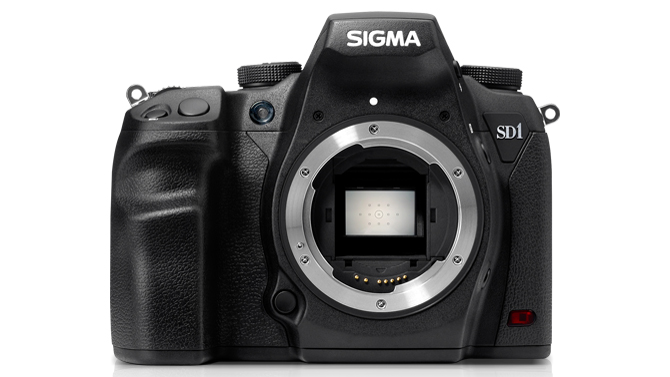Why you can trust TechRadar
We shoot a specially designed chart in carefully controlled conditions and the resulting images are analysed using the DXO Analyzer software to give noise and dynamic range measurements at every sensitivity (ISO) setting.
For more more details on how to interpret our test data, check out our full explanation of our noise and dynamic range tests.
JPEG signal to noise ratio
A high signal to noise ratio (SNR) generally indicates a cleaner and better quality image.
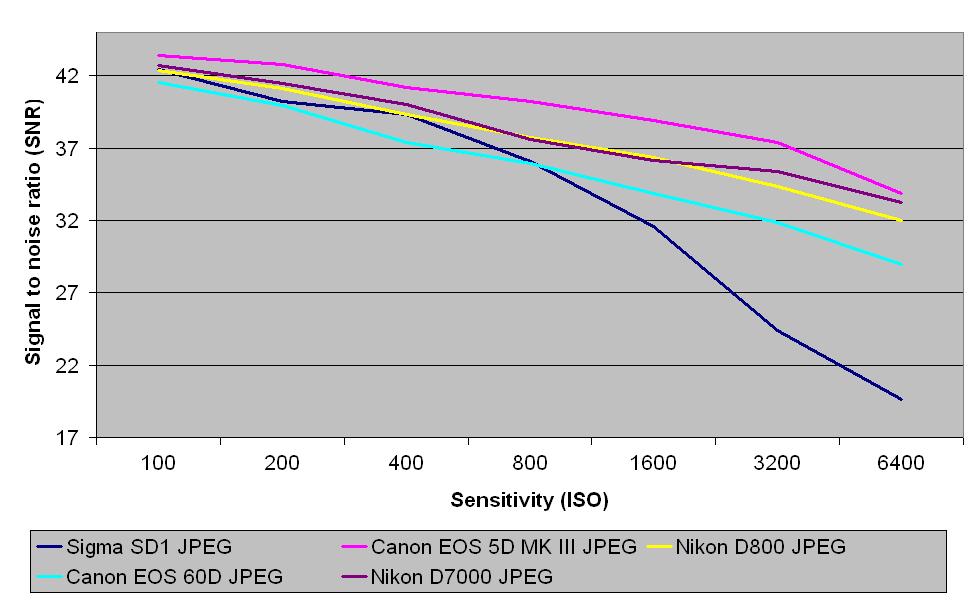
Our lab tests indicate that the Sigma SD1 Merrill produces JPEG images that have a similar signal to noise ratio to those from the Canon EOS 5D Mk III, Nikon D800, Canon EOS 60D and Nikon D7000, at lower ISOs, but it drops off from about ISO 800 and above.
Raw signal to noise ratio
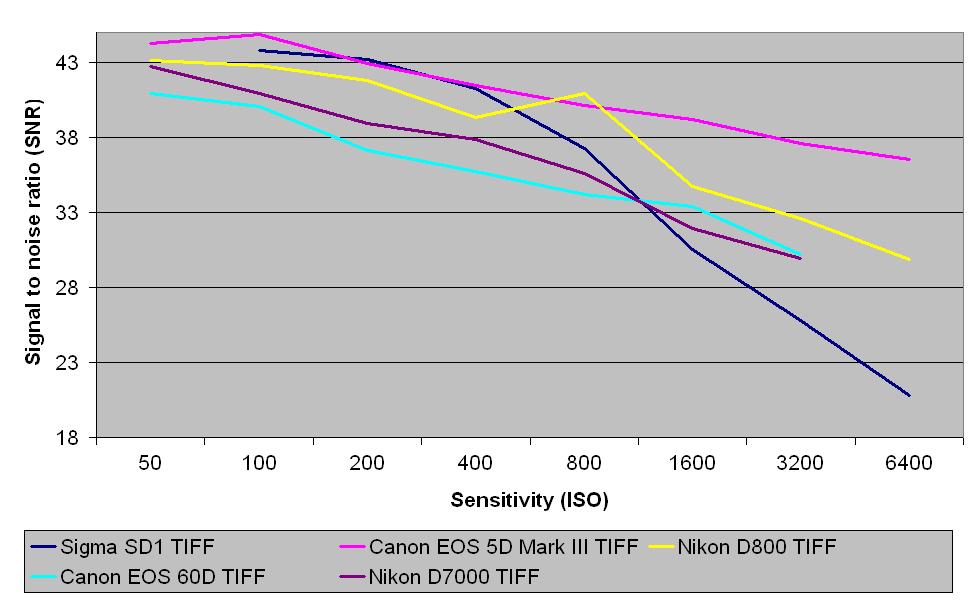
The Sigma SD1 Merrill's raw files (after conversion to TIFF) start off with some of the highest signal to noise ratio values, matching the Canon EOS 5D Mk III up until the mid-range sensitivities, when it dips to scores closer to the Nikon D800, Canon EOS 60D and Nikon D7000. However, its performance is much lower than the other cameras at higher sensitivities (ISOs).
JPEG dynamic range
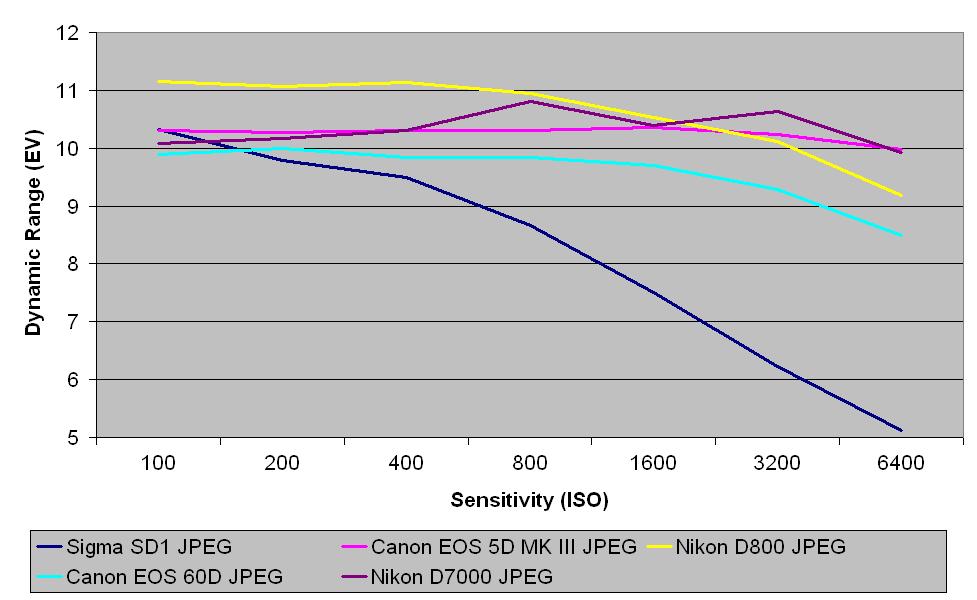
This chart indicates that the dynamic range of the Sigma SD1 Merrill's JPEGs compares poorly with that of the Canon EOS 5D Mk III, Nikon D800, Canon EOS 60D and Nikon D7000 images. Though it starts off at the same point as the Canon 5D Mk III at ISO 100, it falls slightly below the Canon 60D until about ISO 400, when its dynamic range tails off sharply.
Raw dynamic range
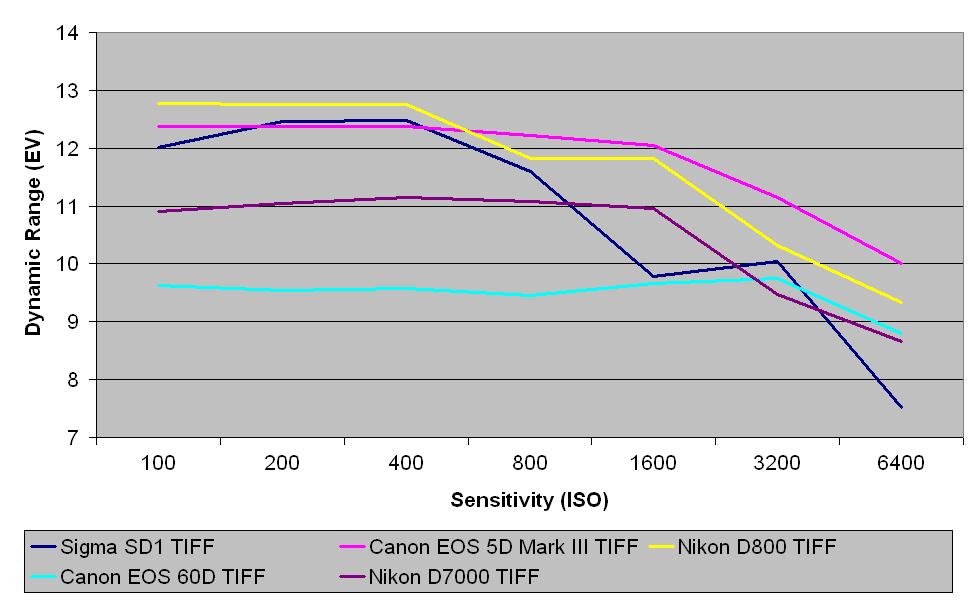
This chart indicates that the Sigma SD1 Merrill's raw files fare better than the JPEGs for dynamic range at low ISOs. It shows a greater range than the Canon EOS 5D Mk III, Canon EOS 60D and Nikon D7000 at low sensitivities, but begins a sharp fall after ISO 800. The Nikon D800 boasts better dynamic range than the Sigma SD1 Merrill throughout the whole range.
Current page: Noise and dynamic range
Prev Page Image quality and resolution Next Page Sample images